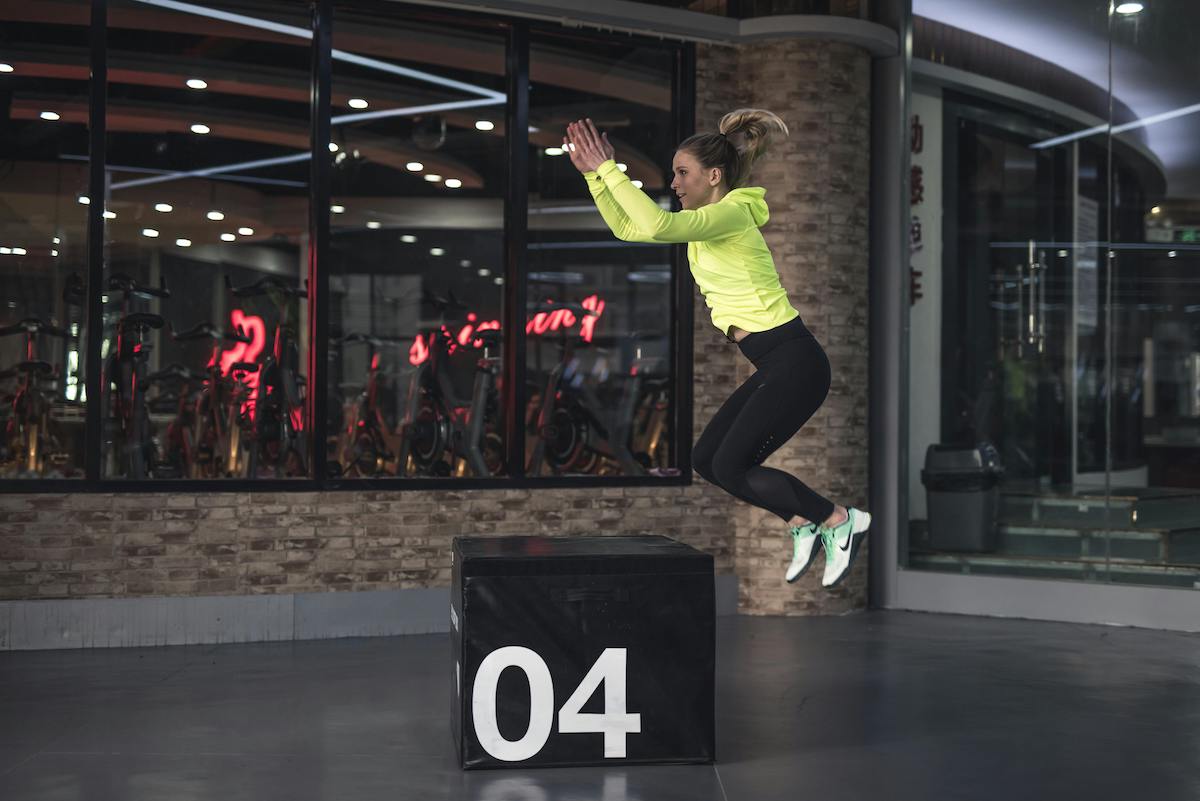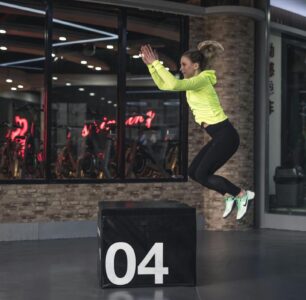Rugby, a sport that demands strength, agility, and explosive power, requires athletes to constantly push their physical limits. For female athletes between the ages of 14 and 21, incorporating dynamic exercises into their training regimen is crucial for enhancing performance on the field. One such exercise that has gained popularity among rugby players is the box jump. This plyometric exercise not only targets specific muscle groups but also helps improve speed, power, and overall athleticism.
What Muscles Do They Target?
Box jumps are a full-body exercise that engages multiple muscle groups simultaneously. Here are the primary muscles targeted during this explosive movement:
1. Quadriceps
The quadriceps, located at the front of the thigh, are heavily engaged during the upward phase of the box jump. This muscle group is responsible for extending the knee joint, allowing athletes to propel themselves off the ground with force.
2. Glutes
The glutes, comprising the gluteus maximus, gluteus medius, and gluteus minimus, play a significant role in hip extension and stabilization. They are activated as the athlete jumps onto the box, providing power and stability throughout the movement.
3. Hamstrings
The hamstrings, located at the back of the thigh, act as synergists to the glutes during the box jump. They assist in hip extension and knee flexion, helping propel the body upwards and forwards.
4. Calves
The calf muscles, including the gastrocnemius and soleus, are engaged to provide additional force during the push-off phase of the jump. They contribute to ankle plantar flexion, aiding in the liftoff from the ground.
What Are the Outcomes?
Incorporating box jumps into a rugby training program can yield several beneficial outcomes for athletes:
- Increased Explosive Power: Box jumps are a plyometric exercise that enhances explosive power, enabling athletes to generate greater force with each stride and tackle.
- Improved Vertical Jump: By repeatedly practicing box jumps, athletes can improve their vertical jump height, which can be advantageous in lineouts and jump balls during matches.
- Enhanced Agility and Coordination: Performing box jumps requires precise coordination and proprioception, helping athletes develop agility and body control on the field.
- Strengthened Lower Body Muscles: The repetitive nature of box jumps strengthens the muscles of the lower body, including the quadriceps, glutes, hamstrings, and calves, which are essential for sprinting, cutting, and tackling.
How Do They Benefit Rugby Players?
Box jumps offer specific advantages to rugby players, aligning with the physical demands of the sport:
- Improved Tackling Power: Rugby involves intense physical contact, and explosive power is crucial for effective tackling. By incorporating box jumps into their training, players can develop the strength and speed needed to execute powerful tackles.
- Quicker Acceleration: Rugby matches often require sudden bursts of speed to evade opponents or chase down the ball. Box jumps help improve acceleration by training fast-twitch muscle fibers, enabling players to accelerate rapidly on the field.
- Reduced Risk of Injury: Stronger muscles and improved coordination gained from box jump training can help reduce the risk of common rugby injuries, such as strains, sprains, and ligament tears.
Do I Need a Plyometric Box or Platform?
When incorporating box jumps into your training regimen, having access to a plyometric box or platform is highly recommended, but it’s not always necessary. Let’s explore the options:
Plyometric Box or Platform
Using a dedicated plyometric box or platform offers several advantages:
- Safety and Stability: Plyometric boxes are specifically designed to withstand the impact of repetitive jumps, providing a stable surface for landing.
- Adjustable Heights: Many plyometric boxes are adjustable, allowing you to vary the height of your jumps as you progress in your training.
- Portability: Some plyometric boxes are lightweight and easy to transport, making them convenient for use in different training environments.
Alternatives to Plyometric Boxes
If you don’t have access to a plyometric box or platform, don’t worry—there are alternative options available:
- Sturdy Furniture: Utilize sturdy furniture items such as benches, chairs, or even stairs to perform box jumps. Ensure that the surface is stable and can support your weight.
- Stacked Gym Equipment: Stack gym equipment such as weight plates, aerobic steps, or exercise mats to create a makeshift platform for box jumps. Be cautious and ensure that the stack is secure before jumping.
- Outdoor Terrain: Take advantage of natural features in outdoor environments, such as low walls, park benches, or concrete ledges, to perform box jumps. Exercise caution and choose surfaces that are flat and free from hazards.
Safety Considerations
Regardless of the equipment you use for box jumps, safety should always be a top priority:
- Stability: Ensure that the surface you’re jumping onto is stable and secure to prevent accidents or injuries.
- Height Selection: Start with a lower height and gradually progress to higher levels as you build confidence and proficiency in the movement.
- Proper Technique: Focus on maintaining proper form and landing mechanics to minimize the risk of strain or injury to your joints.
- Supervision: If you’re new to box jumps or unsure about your technique, consider seeking guidance from a qualified coach or trainer who can provide feedback and assistance.
How to Perform the Exercise Correctly
Performing box jumps with proper form is essential to maximize effectiveness and minimize the risk of injury. Follow these steps to execute the exercise correctly:
- Starting Position: Stand facing a sturdy box or platform with your feet shoulder-width apart.
- Preparation: Bend your knees slightly and swing your arms back to generate momentum.
- Jumping Motion: Explosively extend your hips, knees, and ankles as you swing your arms forward and upward.
- Landing: Land softly on the box with both feet, ensuring that your knees are bent to absorb the impact.
- Stabilization: Maintain balance and stability on the box for a brief moment before stepping back down to the starting position.
Variations of the Exercise
To add variety to your training routine and target different muscle groups, consider incorporating the following variations of box jumps:
1. Depth Jumps
Depth jumps involve stepping off a raised platform before immediately jumping vertically or horizontally upon landing. This variation emphasizes rapid force production and reactive strength.
2. Single-Leg Box Jumps
Performing box jumps on a single leg challenges stability and balance while targeting each leg individually. This variation is beneficial for addressing muscle imbalances and enhancing unilateral strength.
3. Weighted Box Jumps
By holding dumbbells, kettlebells, or a weighted vest during box jumps, athletes can increase resistance and further develop strength and power in the lower body.
Integrating the Exercise into Your Routine
To incorporate box jumps effectively into your rugby training regimen, consider the following tips:
- Warm-Up: Begin each session with a dynamic warm-up to prepare your muscles for explosive movements like box jumps.
- Progressive Overload: Gradually increase the height or intensity of your box jumps as you build strength and confidence.
- Frequency: Aim to include box jumps in your workouts 2-3 times per week, allowing for adequate rest and recovery between sessions.
- Supplementary Exercises: Pair box jumps with complementary strength and conditioning exercises to enhance overall athletic performance.
Safety Tips and Common Mistakes
To ensure safety and maximize the benefits of box jumps, keep the following tips in mind:
- Start Low: Begin with a lower box height and gradually progress to higher levels as your strength and technique improve.
- Focus on Landing: Pay attention to your landing mechanics to prevent injuries, ensuring that you land softly and with proper knee alignment.
- Avoid Overtraining: Listen to your body and avoid overtraining, as excessive fatigue can compromise form and increase the risk of injury.
Complementary Exercises
In addition to box jumps, incorporating the following exercises into your training routine can further enhance your performance on the rugby field:
- Squats: Strengthen the lower body and core muscles essential for tackling, sprinting, and maintaining stability.
- Deadlifts: Develop posterior chain strength and improve hip extension, aiding in explosive movements and injury prevention.
- Lateral Bounds: Enhance lateral speed and agility, which are valuable for evading opponents and changing direction quickly.
Alternative Exercises
If you’re unable to perform box jumps due to equipment limitations or physical restrictions, consider the following alternative exercises:
- Broad Jumps: Perform explosive horizontal jumps for distance, focusing on generating power from the hips and landing softly.
- Vertical Jump Variations: Practice vertical jumps without a box, aiming to achieve maximal height with each repetition.
- Step-Ups: Step onto a sturdy platform with one foot at a time, emphasizing control and stability throughout the movement.

